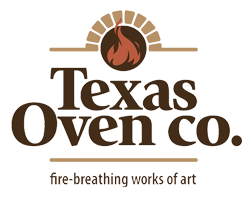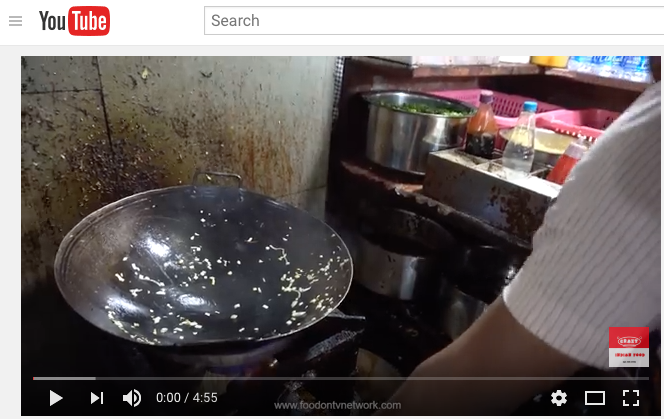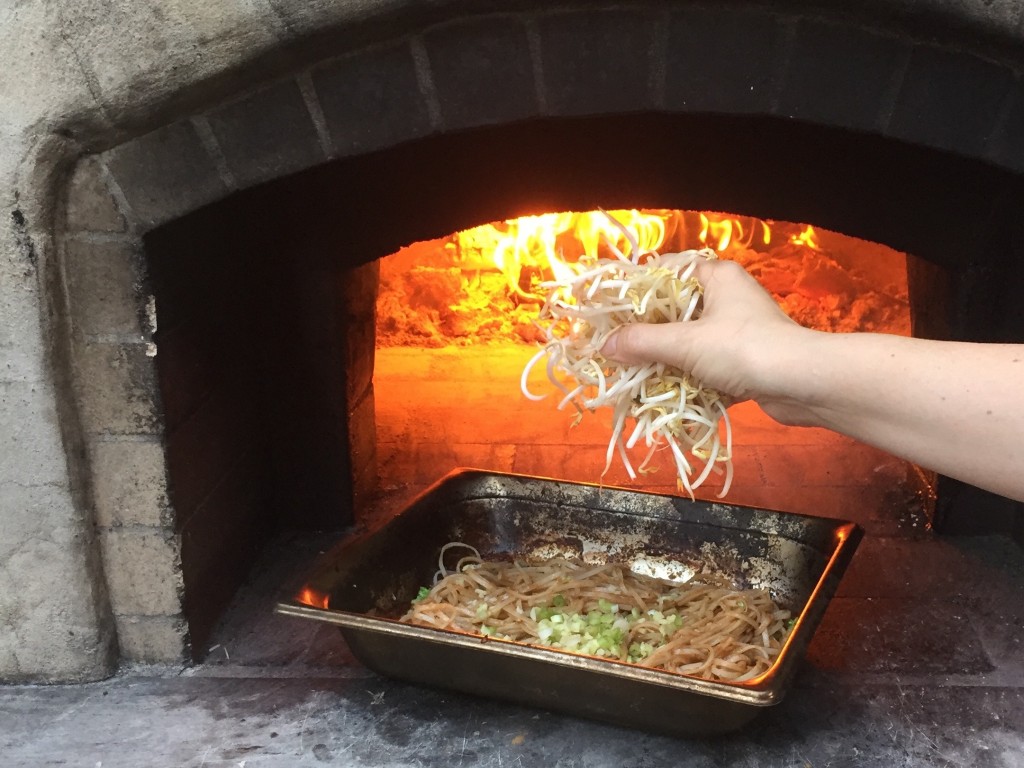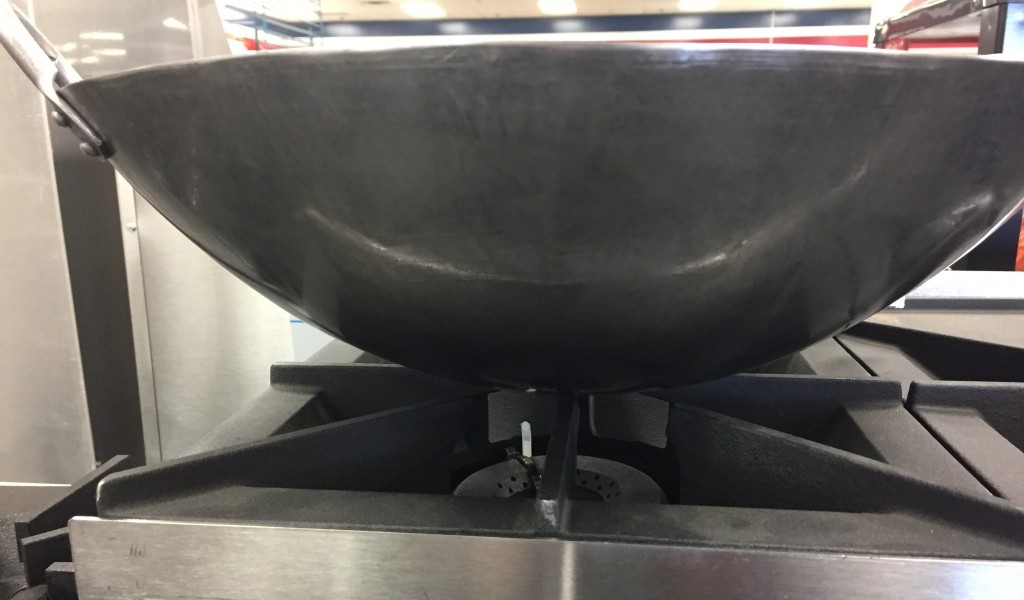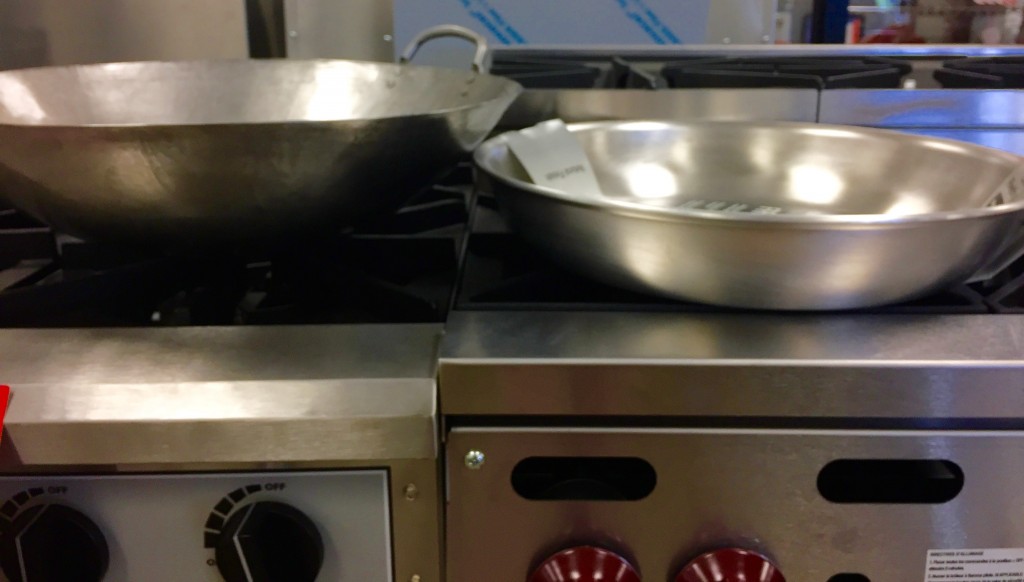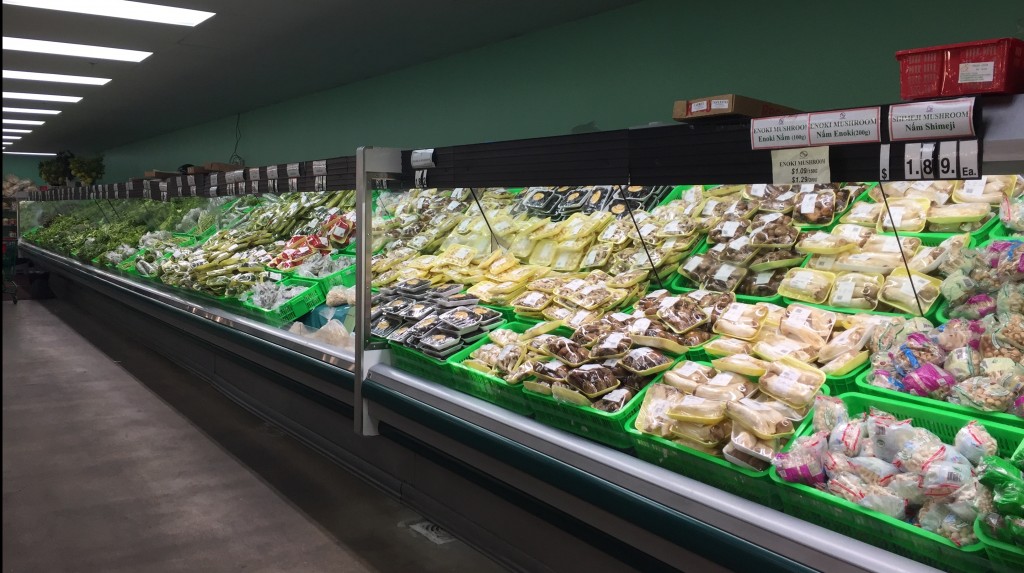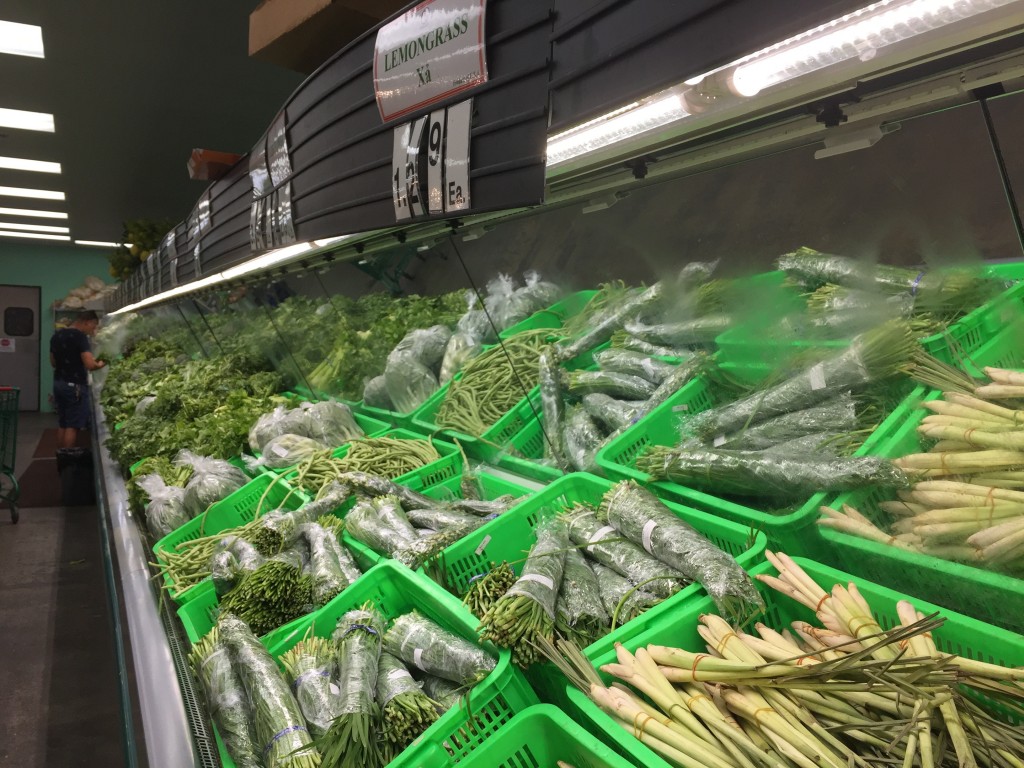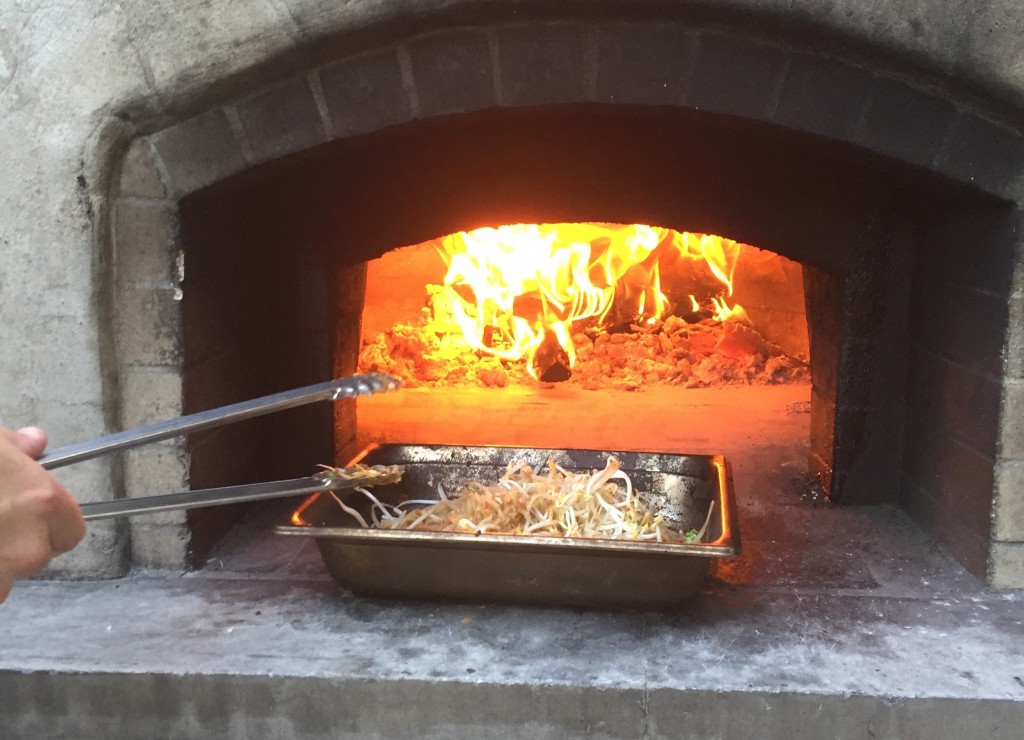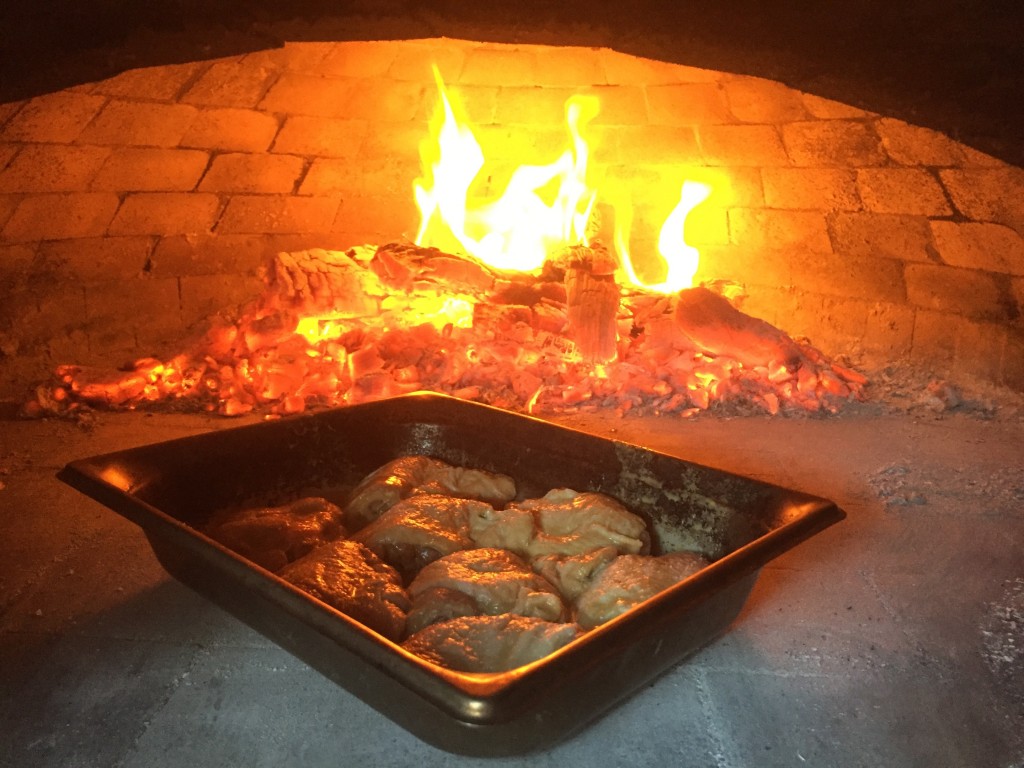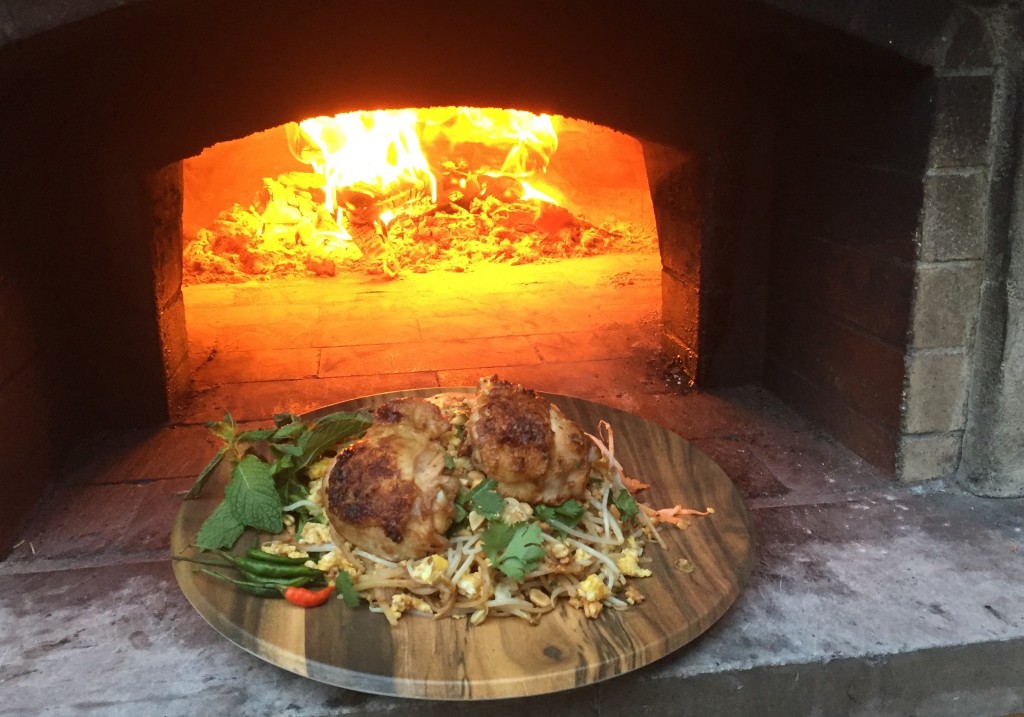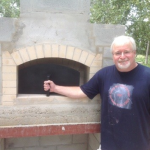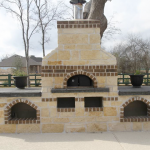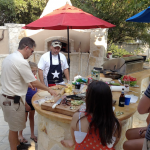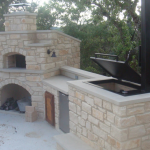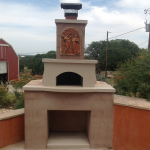Wok Pan Function in Wood-fired Oven
What is a wok pan
A wok is an amazing pan, designed for cooking with fire, intense heat, speed, flair and flavor. The wok pan is an example of a tool that fits its purpose, “form fits function.”
There’s no getting around the shape of a wok pan. It perfectly lends itself to immersion in flames—round-bottomed, curved bowl for pit-style hearth cooking. It’s popular for stir-frying and recreating Asian street cooking. A good wok pan is a multi-tasking tool: for steaming, poaching, searing, roasting, and frying. A wok pan performs most cooking functions but excels in a high heat, fiery cooking environment.
These two videos demonstrate the wok at its best. It’s exciting to watch the experts–flames, tossing, seasoning, delicious meals in minutes.
Wood-fired oven meets wok pan
A wood-fired-oven is not a wok pan or a tandoor but these three have more in common than immediately meets the eye. Although they come from different historical food cultures, this unlikely trio shares the essentials that make for fast, flavorful, nutritious cooking. All rely on fire and intense heat for quick cooking and flavor. All three provide provide the spectacular drama of cooking with a live fire.
Another way to cook with fire
Dave has a wok pan which he uses with a power burner built into his outdoor kitchen. Power burners are small, high heat gas units that put out significantly more heat than a regular gas stove. Power burners create curling flames that wrap the wok with high heat. They recreate the fiery environment for which the wok pan was designed.
The wok pan is such an ideal tool for its function, that folks interested in cooking with live fire often ask about them. I’m excited that we’re fabricating an element for our Argentinian grills, a ring designed to hold a round-bottomed, traditional wok. The flames used in grilling can be positioned to surround the wok pan providing an authentic environment for wok cooking.
Until I get to test out the wok accessory on our new wood-fired grill, I’m holding off on purchasing the wok pan I’ve got my eye on. I’ll continue doing high heat stir-fry in the wood-fired oven. Although hotel pans are straight-sided rather than curved, they are the ideal stand-in for a wok pan when cooking in a wood-fired oven. Their flat bottoms and light material maximize contact with the oven floor, transferring heat quickly to your food. Nothing does a better job of efficiently transferring heat, the oven can hold multiple pans, so no pan needs to be over-crowded. A couple smaller hotel pans, or one of my favorite Vollrath 68257 Wear-Ever Baking / Roast Pan, can mimic the maximum surface area provided by a wok pan in its traditional environment. They quickly cook meats and vegetables popular in stir-fries.
Conventional oven and a wok pan
Although I love reading Serious Eats, their article on using a wok pan was hit and miss for me. I agree that a wok pan can be a great multi-tasker, but disagree on it being a fantastic choice for stir-frying on a conventional stove top. The author describes how restaurant chefs use a wok pan, then suggests home cooks work in small batches.
At a restaurant, a wok chef has two valves controlled by his knees. One controls gas flow, while the other controls oxygen. Together, they allow him to control the heat under the wok from a lighter-sized flame to an all-out, jet-engine-sized ring of fire. Most cooking gets done under this extreme heat, which allows him to successively add ingredients to the wok without risking rapid temperature drop. Try the same thing at home, and you’ll find yourself standing over a woeful wok-ful of pale, flaccid, steaming meat and vegetables.
To compensate for this, the key is to heat your wok until it is literally smoking hot, cook in batches, and allow your wok to reheat fully between each batch. (emphasis mine)
The functional shape of a wok is defeated on a conventional stovetop. Only the very bottom is in contact with the flame, exactly the opposite of the design goal. A better choice is to stir fry in your largest sauté pan to maximize the amount of pan surface in contact with the flame. Or, turn to your wood-burning oven where there is an entire floor of smoking hot cooking surface and plenty of live flame.
Manufacturers have designed flat-bottomed woks for use on electric stoves, but most agree they lose the benefits of the curved shape design. Other attachments concentrate the flames of a gas burner to surround the wok with flames for the high heat cooking. A flat-bottomed wok pan (or a paella pan like this one) is the best choice for conventional stove tops, electric or gas if you really want the fun of cooking in a wok pan and don’t have access to a live fire.
Recreating benefits of wok pan
The wok pan is uniquely designed for high heat, live-flame cooking. Devotees of the wok say nothing can compare with wok cooking at its best. However, few home chefs can recreate the true wok cooking environment. With a wood-burning oven or grill you can approximate the live-flame environment that produces the type of heat critical for real wok cooking. That lets you taste the benefits of wok-style cooking at home. Our go-to hotel pans shine in this again as they make it easy to toss vegetables and meats, give food plenty of space and conduct heat quickly and efficiently. Little oil is needed when meats and vegetables cook quickly, so they retain their flavor.
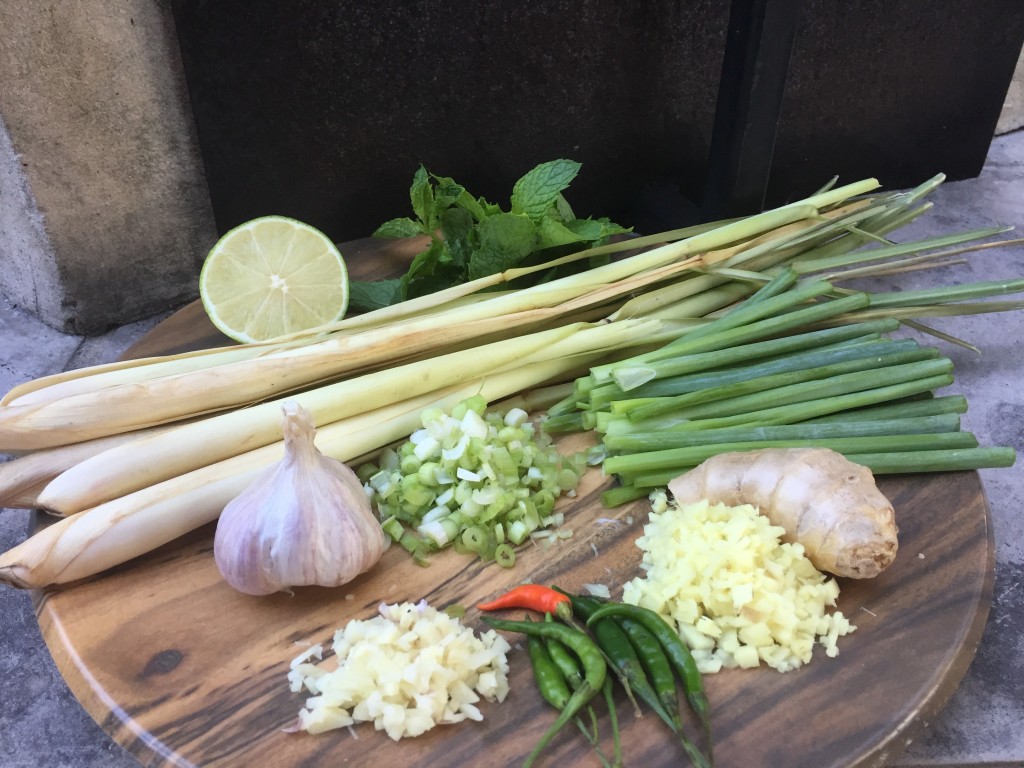
Reimagining a favorite for wood-burning oven
Any stir-fry recipe will show off the fire-breathing capabilities of a wood-burning oven, but Pad Thai is one of my favorites because pretty much everyone will enjoy it. Even in an article encouraging folks to expand out from Pad Thai, Bon Appetit magazine slipped off message.
Thai food masterfully walks a delicate line between salty, spicy, sour, and sweet, perhaps no better demonstrated than in pad Thai. Undeniably the most ubiquitous and oft-ordered dish in American-Thai restaurants, it’s perfection. From the slight funk of fish sauce to the peanutty topping to the just-a-little-chewy noodles to the fresh squeeze of lime juice brightening it all up… sorry, what were we saying? Oh, right. Pad Thai.
You can go super basic with a Pad Thai recipe like this one from Epicurious.com, but I recommend going the extra mile of finding a recipe that includes tamarind, like this one from Inquiring Chef. As they explain, “the ingredient that gives pad thai its distinctive pad thai flavor is tamarind paste. This is the sweet, sour, slightly fruity taste that goes so well with the nuttiness of the peanuts.” You can make your own or buy ready-made paste, either way it might be an excuse to head to your favorite Asian market and stock up on tamarind and any the other herbs and aromatics you’ll need. They have economics of scale on ingredients that a standard HEB might consider “specialty” so the price of long Asian green beans, mint, basil, and lemongrass might make the trip worthwhile.
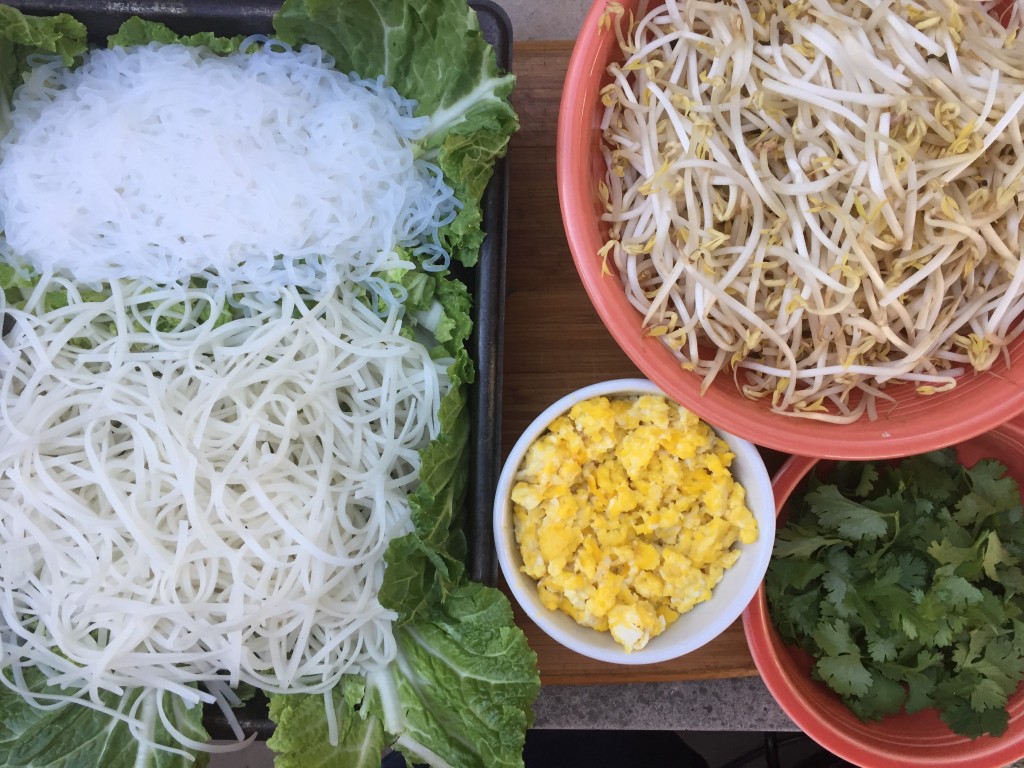
I found a tamarind paste that did not have any added ingredients at MT Supermarket along with giant limes (5 for $1) and big bundles of lemongrass and mint and every kind of bean sprout. While there, I couldn’t resist getting some shredded green papaya for this delicious (and super easy) green papaya salad.
In the same way professional chefs add ingredients one at a time to their wok pan, quickly fire the aromatics and sprouts in a hotel pan pushed in close to a roaring fire. Pull out the pan in between additions and toss the ingredients by flipping the pan or with long-handled tongs.
You can add eggs and scramble them in the pan or scramble them separately and add them toward the end. Toss in rice noodles (or substitute shirataki noodles also available at the Asian market, usually in the refrigerated section).
Pad thai works as a vegetarian dish or with your favorite protein. I chose to fire-roast chicken thighs separately and then have the option to serve those on top. While we cooked the aromatics, been sprouts and noodles the way you would in a wok pan, we kept a separate pan of chicken thighs roasting to perfection (marinated in the tamarind-based pad thai sauce) to get crispy skins and moist interiors. This is a great example of how the cooking zones in a wood-fired oven provide flexibility. While doing wok pan style cooking close to the fire, we had plenty of room to keep the chicken thighs in a lower-heat roasting environment. You could make this a single-pan meal by slicing the chicken thin as you would for a stir-fry application in a wok pan.
